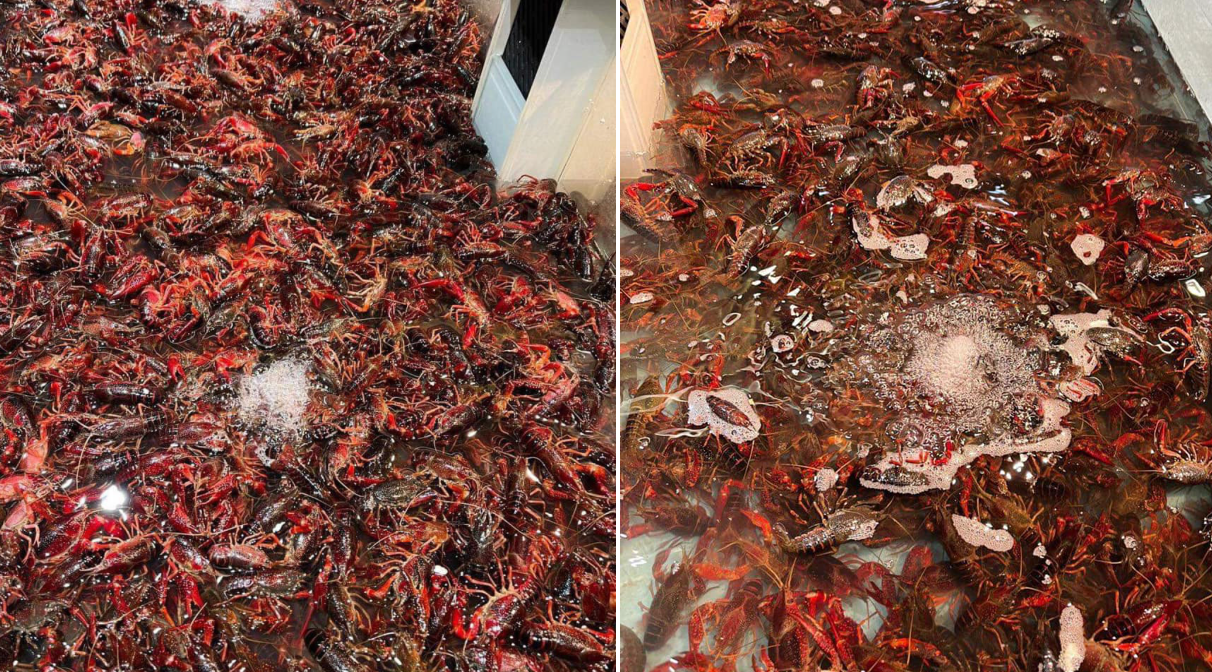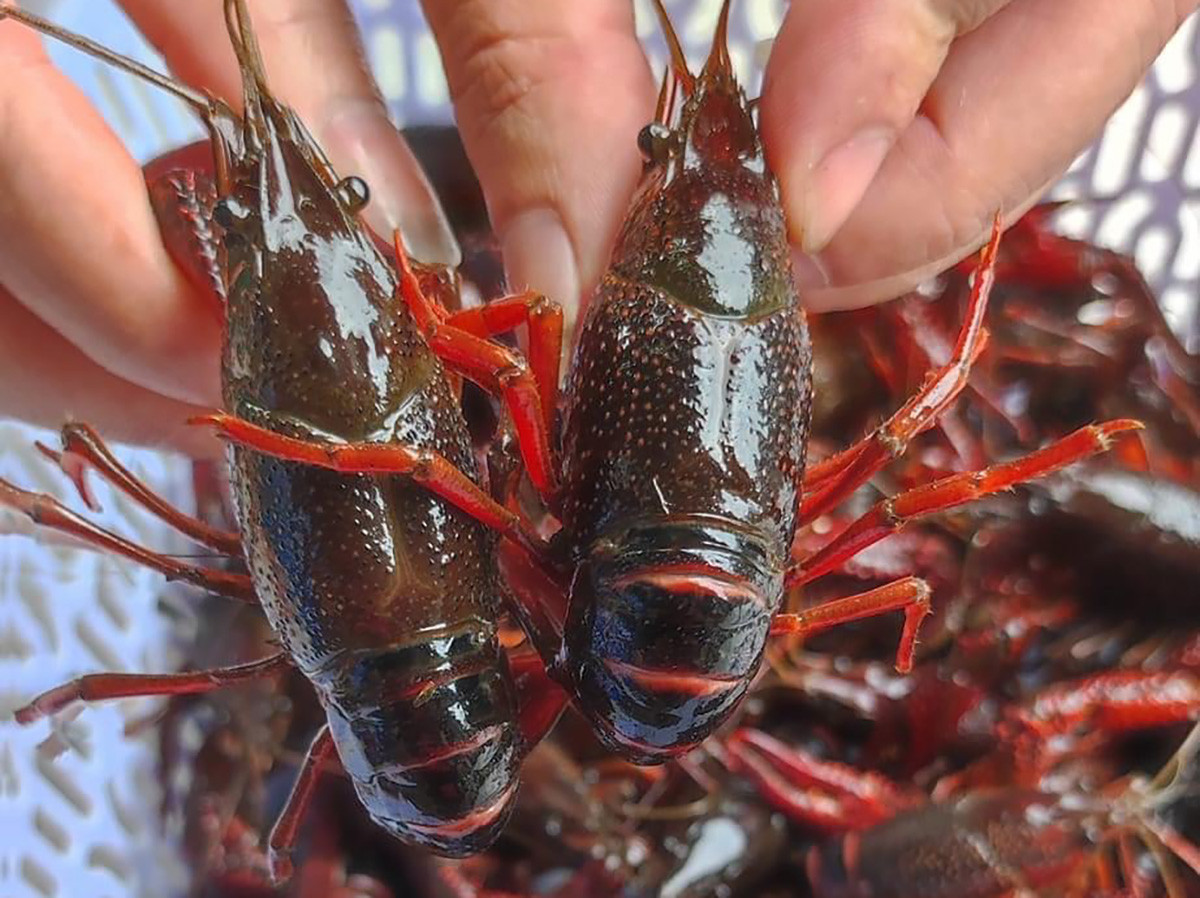
In recent days, online seafood markets have seen a surge in the advertisement and sale of live crayfish in large quantities. Although these lobsters are as small as whiteleg shrimp and contain very little meat, traders highlight their attractive red color and firm, sweet meat when cooked. Popular dishes include lobster with garlic butter sauce, tamarind sauce, and spicy stir-fry.
Currently, crayfish are priced between 360,000-400,000 VND/kg. While this is a 30-40% decrease compared to the previous year, it remains higher than the price of whiteleg shrimp in Vietnamese markets.
Ms. Nguyen Thi Thu, an online seafood seller in Hanoi, noted that May to July is the peak season for crayfish in China, leading to an abundant supply and lower prices. "Last year, the price ranged from 500,000-600,000 VND/kg. Now it's only 360,000 VND/kg," she said.
Ms. Thu added that while imported frozen crayfish are mainly sold wholesale to restaurants due to their lower prices, live crayfish are primarily sold to individual households. Orders for live crayfish often come in at 2kg per customer.
"This lobster is very hardy. It can live all day on land without water, and it can live well for a week in a tank," she said. However, to ensure freshness, Thu usually imports 50-60kg, just enough to sell in a day.
Ly Thi Diep, another seller, emphasized the strong demand for live crayfish, with many orders being fulfilled daily. "The crayfish are 35 per kg and very healthy. They are packed in 1 kg mesh bags and transported to the market," she said. Depending on customer orders, she buys 30-100kg of crayfish daily.
Invasive species concerns

Despite their popularity, crayfish are an invasive species and are banned from trade in Vietnam. The Ministry of Agriculture and Rural Development has listed them in Appendix 2 of the invasive alien species list since 2018. Crayfish are not permitted for trade under Vietnamese law.
Experts warn that crayfish pose a significant threat to agriculture due to their habits of digging deep burrows, living both underwater and on land, and their omnivorous diet. They can damage infrastructure, destroy native ecosystems, and carry diseases.
China, the world's large crayfish producer, has seen an explosion in crayfish farming, leading to concerns about national food security. In Africa, crayfish have invaded rivers and lakes, destroying local ecosystems and infrastructure.
In Vietnam, the agricultural sector is crucial to the livelihoods of many farming households. The lesson from the golden apple snail, another invasive species, serves as a warning. Aquaculture experts emphasize the need to control and prevent the trade of crayfish to avoid similar disasters.
Tam An